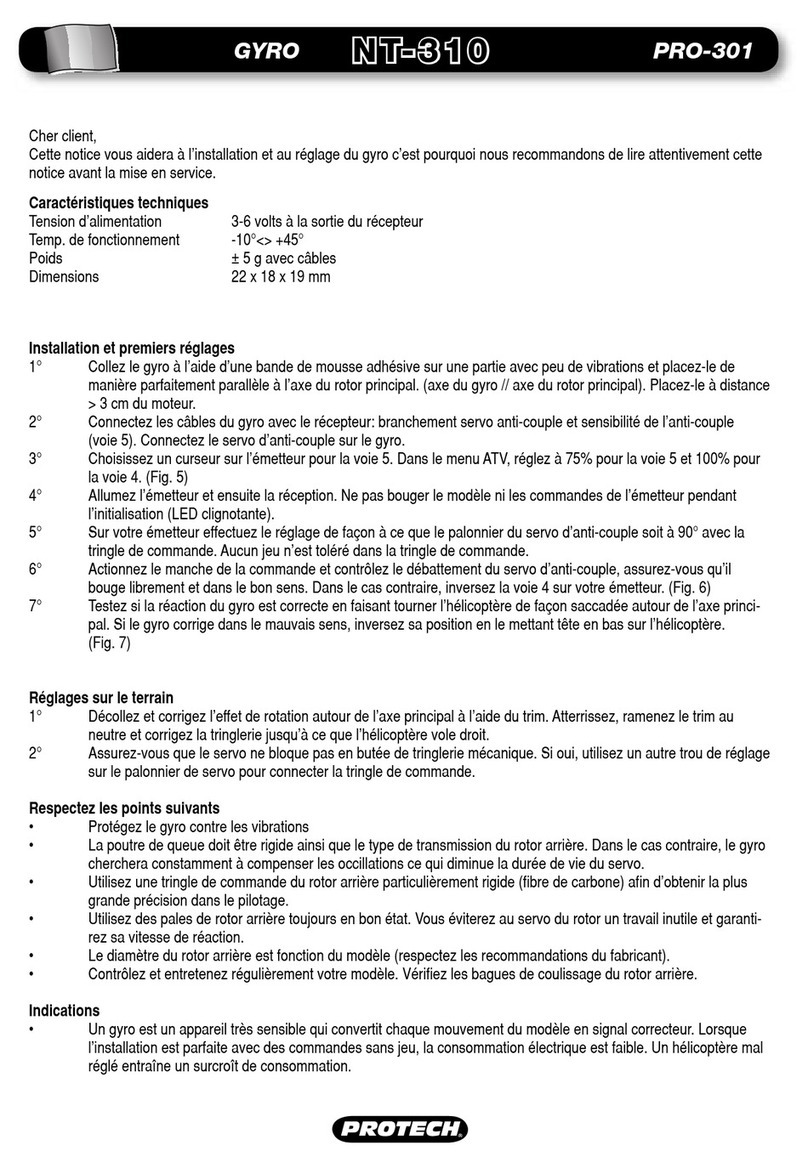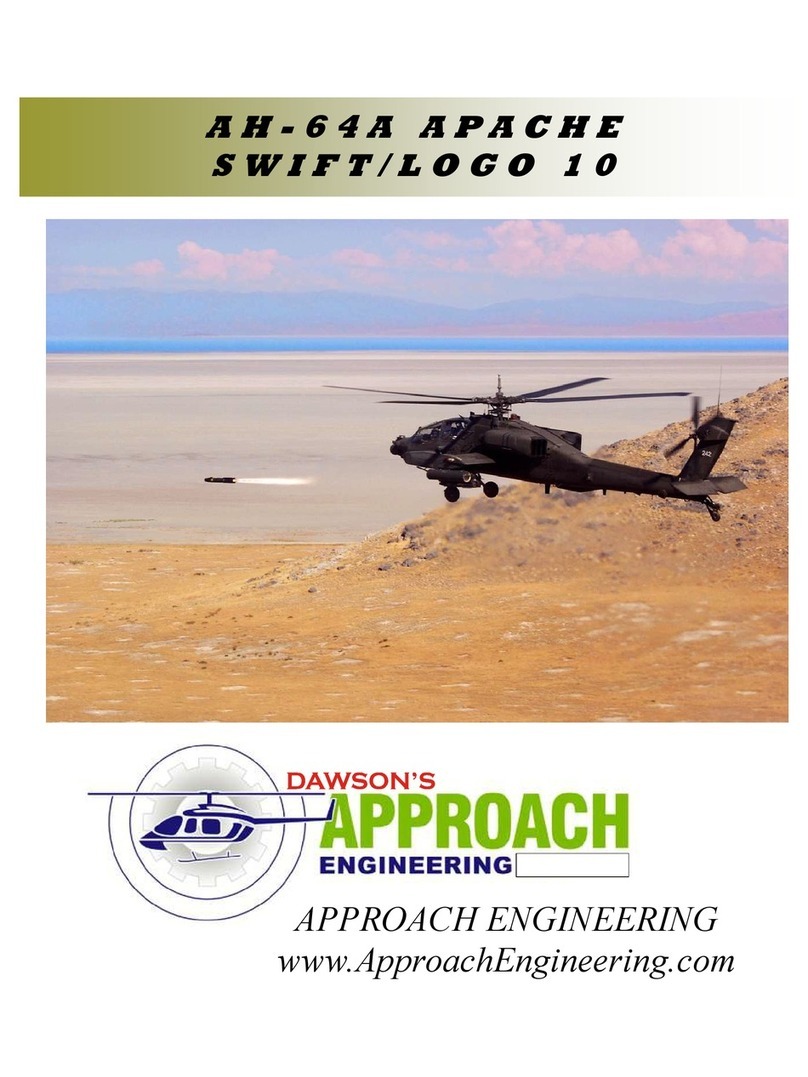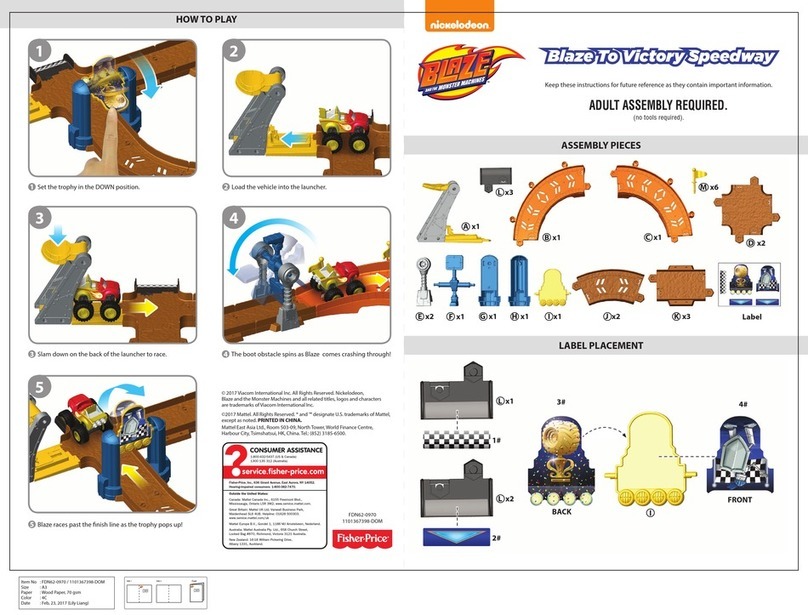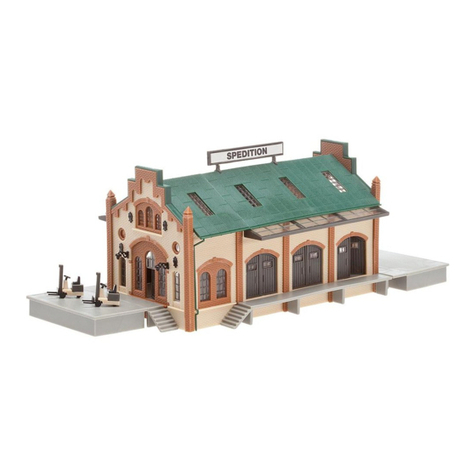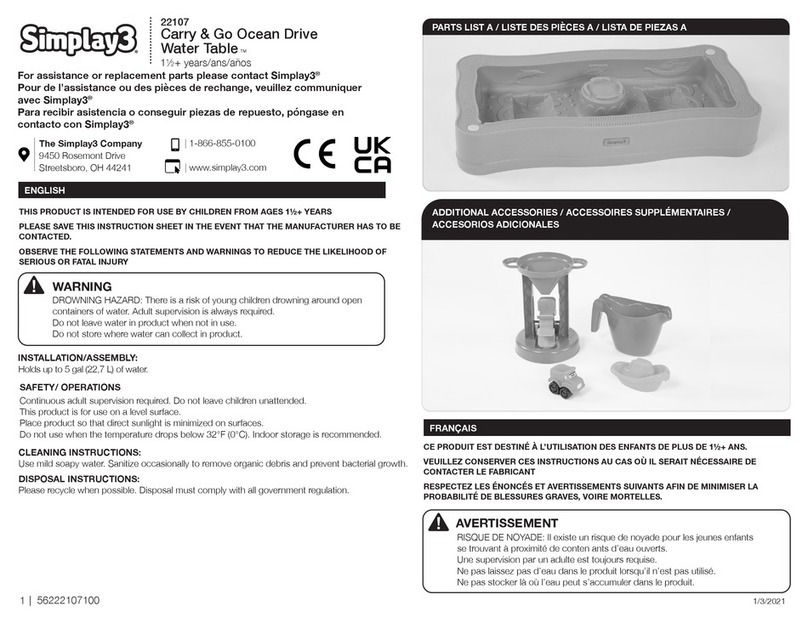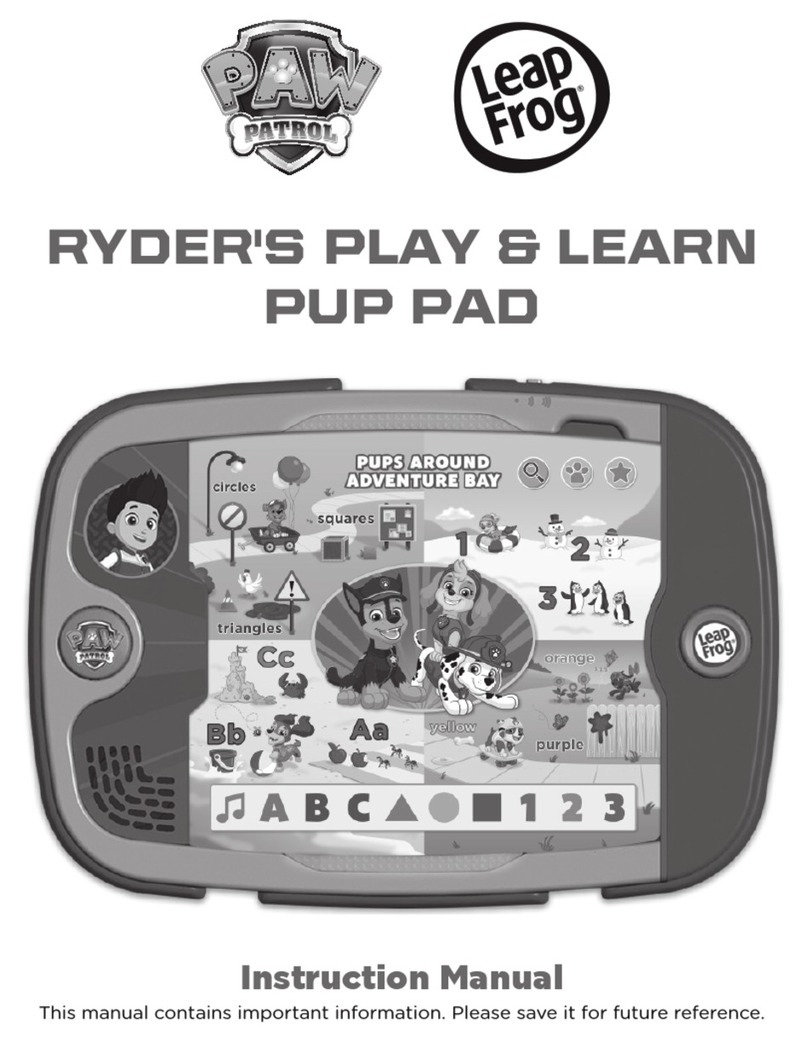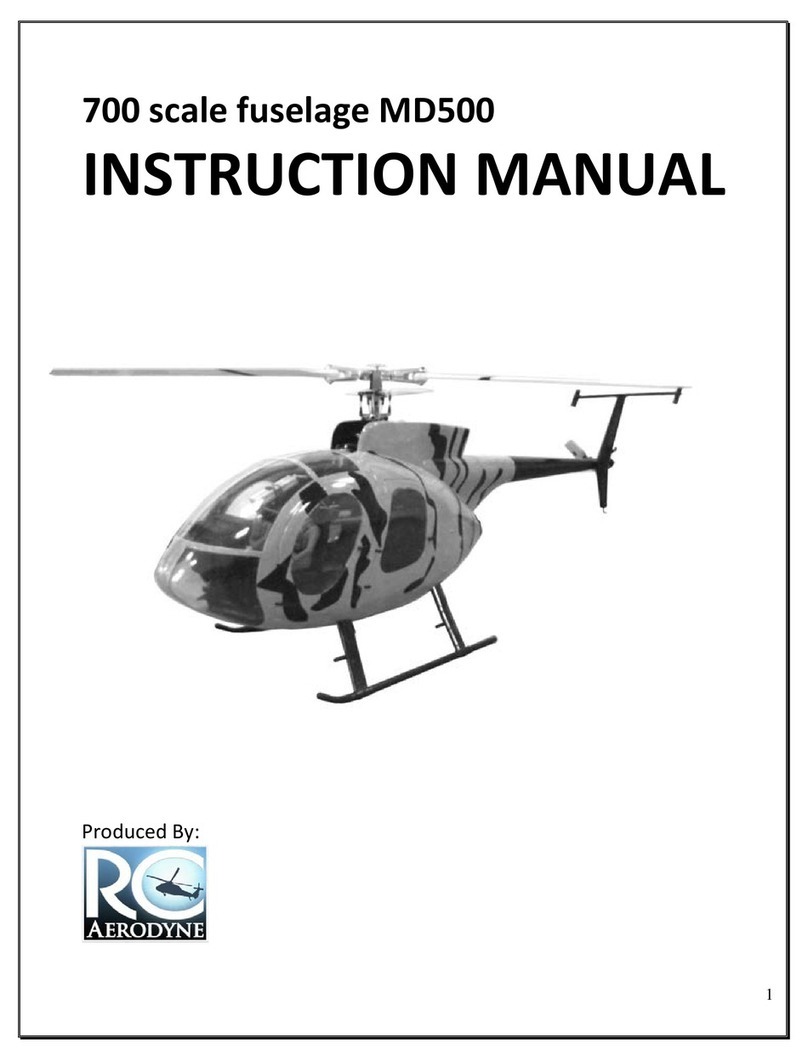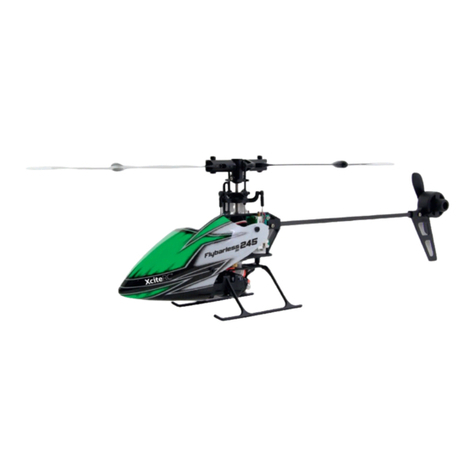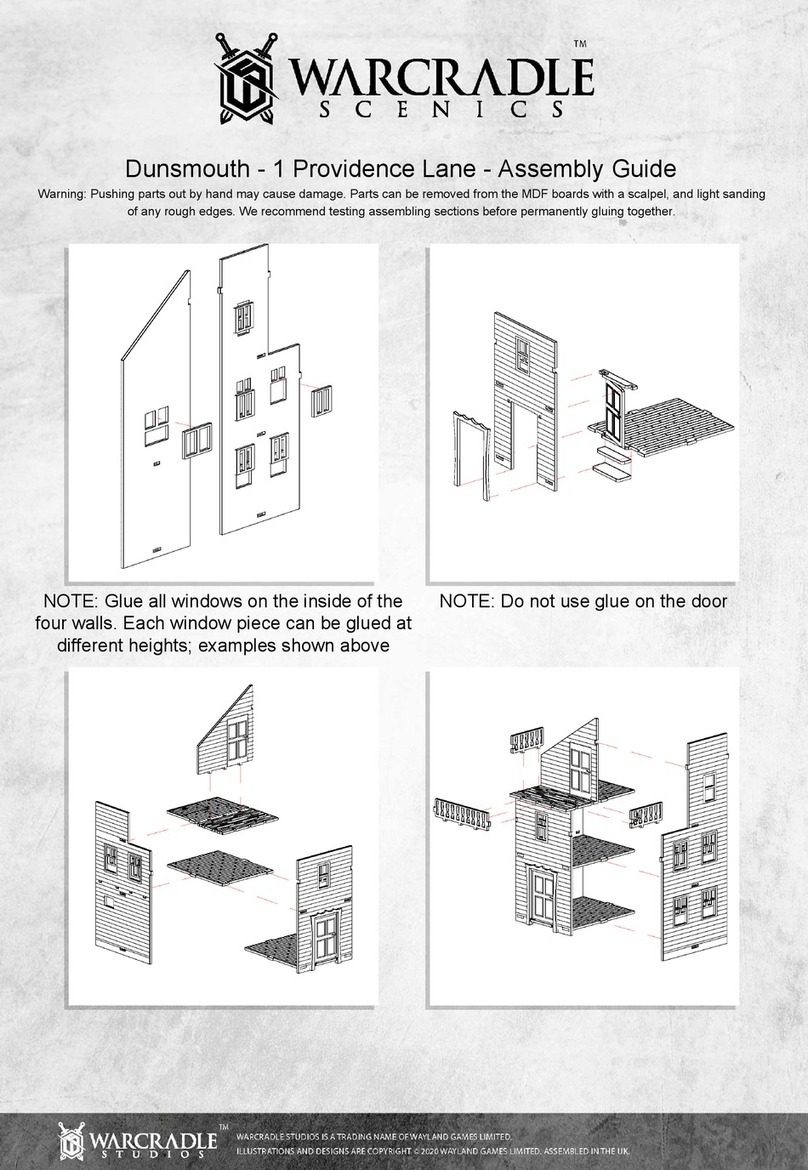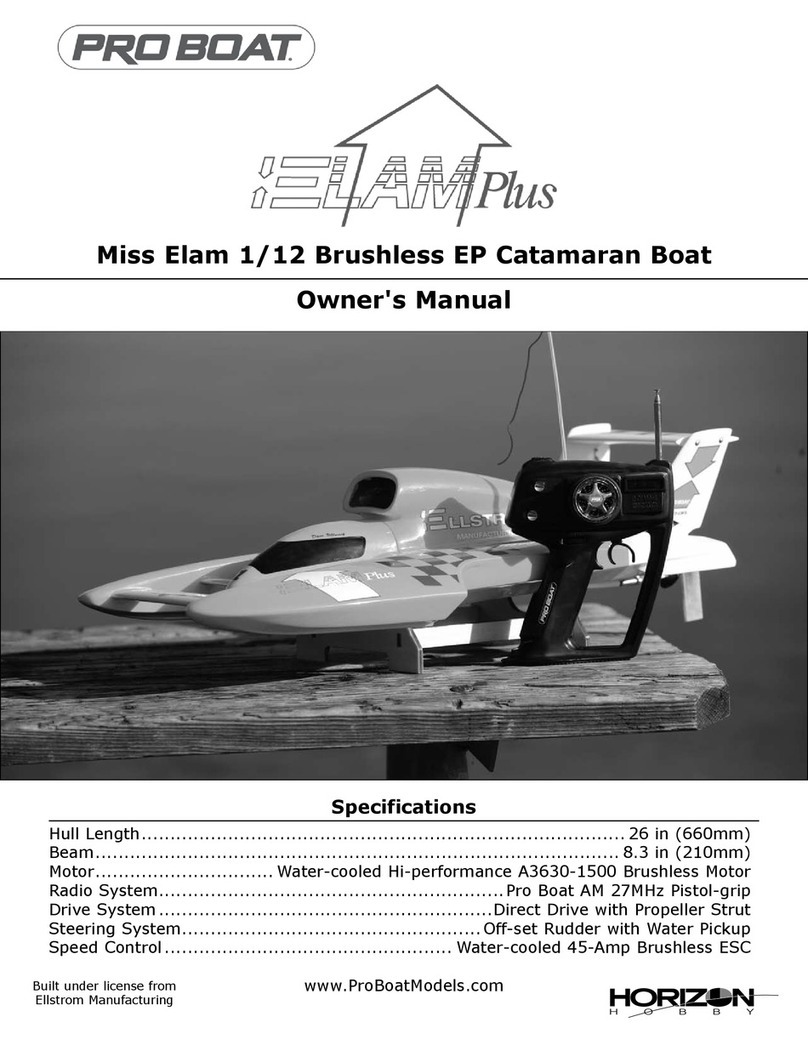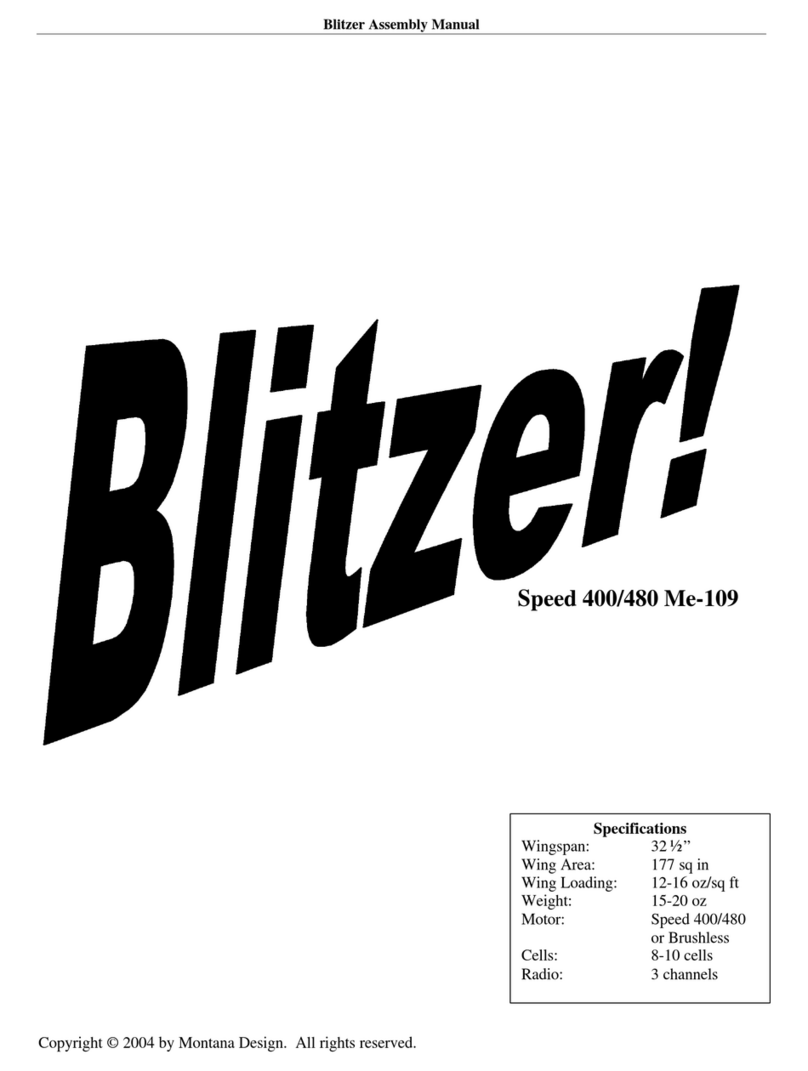
2
TABLE OF CONTENTS
Additional items required…………….
Adhesives and building supplies…..
Disclaimer……………………………………
Parts sheet………...……………………….
Initial setup…………….………………
Installing the mechanics……………..
Final steps…………………………………..
Flying characteristics………………….
2
2
3
4
5
7
8
Introduction:
Thank you for your recent purchase of our 500
size Airwolf. This fuselage is made up of
fiberglass and plywood formers This helicopter
fuselage is sure to bring you great joy with its
amazing flight characteristics and scale
appearance. So from all of us here at RC
Aerodyne, thank you for your recent purchase
and enjoy your new Airwolf.
Additional items required
Trex 500 electric or Chaos 500
Motor, ESC, gyro, servos for a stock 500 size
helicopter
3000mah 6 cell LiPo battery
Adhesives and building supplies
Metric hexagon driver set
Drill bit set
Phillips screw diver
Rotary tool
5 min epoxy
Disclaimer
R.C. Aerodyne Heli’s and Aircraft are not to be treated as toys. Although every effort is made to provide a
superior and dependable product, improper use can cause serious injury and death. Be sure to read this manual
carefully, paying close attention to all warnings, precautions and recommendations. You should insure your
personal safety and that of others when operating R.C. Helicopters or Aircraft.
R.C. Aerodyne and the manufacturer assume no liability for the assembly, maintenance and operation of this
product. This product is intended for use only by adults having extensive experience flying remote controlled
helicopters and Airplanes. You should fly this product only at legal flying fields, away from homes, other
people and traffic.
We strongly recommend that you obtain liability insurance for this product. One source for such insurance is
thru AMA.
AMA
AMA (Academy of model aeronautics) is a self-supporting, non-profit organization whose purpose is to
promote development of model aviation as a recognized sport and worthwhile recreation activity. AMA is the
chartering organization for more than 2,500 model airplane clubs across the country. AMA offers its chartered
clubs official contest sanction, insurance, and assistance in getting and keeping flying sites. AMA is the voice
of its membership, providing liaison with the Federal Aviation Administration, the Federal Communications
Commission, and other government agencies through our national headquarters in Muncie, Indiana. AMA also
works with local governments, zoning boards, and parks departments to promote the interests of local chartered
clubs. The purpose of attaining a membership through the AMA is to have some sort of liability insurance in
the chance of an accident. Though AMA will not cover the airplane/ helicopter in a crash the do have
